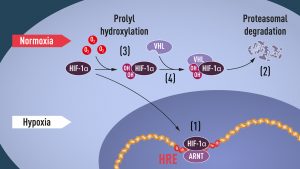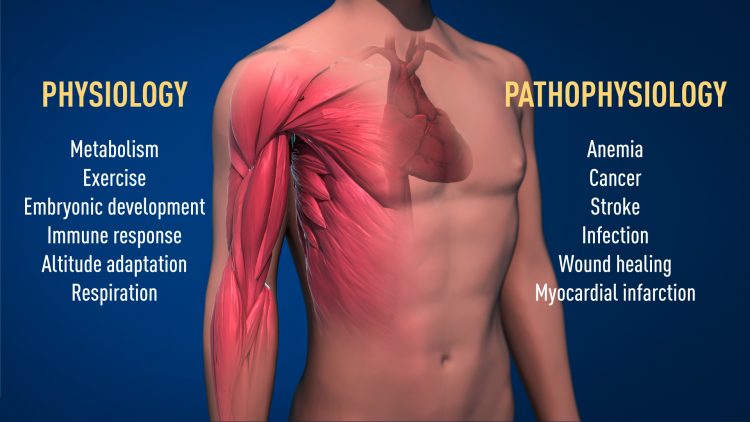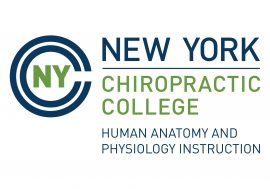Cells & Oxygen Availability | Nobel Special | Episode 54 Bonus
Release Date: 10/07/2019
 Pulse of Progress: Looking Back, Moving Forward | TAPP 147
Pulse of Progress: Looking Back, Moving Forward | TAPP 147
The A&P Professor
In Episode 147, host Kevin Patton reviews the highlights and events of the previous year in the world of The A&P Professor. He then turns to last year's predictions for teaching human anatomy and physiology to see if he was on the right track. Finally, predictions for the coming year are revealed. And lots of other stuff—this episode is two hours long, after all! 0:00:00 | Introduction 0:00:50 | Debrief: Topics, Stats, Reflections 0:21:28 | A Long, Long, Long Episode 0:23:05 | Debrief: More Reviewing & Reflecting 0:38:59 | Did I Get My Predictions Right? 0:50:22 | Textbook &...
info_outline Anatomy of Trust: Promoting Integrity in A&P Education | Winter Shorts | TAPP 146
Anatomy of Trust: Promoting Integrity in A&P Education | Winter Shorts | TAPP 146
The A&P Professor
Episode 146 of The A&P Professor podcast is one of our winter shorts, where I replay interesting segments from previous episodes. In this one, we discuss the importance of academic integrity in the Anatomy & Physiology course. We emphasize the need to incorporate discussions about integrity in the syllabus and course materials and share real-life examples of violations in the healthcare field. We highlight how dishonesty can have serious consequences and discuss strategies for prevention, such as using multiple test versions and unique topics for papers/projects. Providing examples of...
info_outline A Tongue Twister's Guide to Mastering Anatomy Pronunciation | Winter Shorts | TAPP 145
A Tongue Twister's Guide to Mastering Anatomy Pronunciation | Winter Shorts | TAPP 145
The A&P Professor
Episode 145 of The A&P Professor podcast is one of our winter shorts, where I replay interesting segments from previous episodes. In this one, you'll hear about the trials and tribulations of teaching and learning pronunciations of anatomy and physiology terminology. Including why the instructor is ALWAYS correct! 00:00 | Introduction 01:07 | Variations in Anatomy & Physiology Pronunciations 10:24 | Say Anatomy & Physiology Terms Out Loud 20:30 | Staying Connected ★ If you cannot see or activate the audio player, go to: 🏅 Apply for your credential (badge/certificate)...
info_outline Dissecting the Kenhub Atlas: Insights from Editor Mike Pascoe | TAPP 144
Dissecting the Kenhub Atlas: Insights from Editor Mike Pascoe | TAPP 144
The A&P Professor
Mike Pascoe joins host Kevin Patton in Episode 144 to chat about Mike's experience in editing the new Kenhub Atlas of Human Anatomy. We go behind the scenes to see how this new kind of anatomy atlas was developed. Let's see how those decisions get made and how the learning perspective gets incorporated into anatomy manuals. And we explore diverse representation in anatomy images and why we won't find any eponyms in this atlas. We also have a brief remembrance of our friend David Allard. 00:00 | Introduction 00:45 | Remembering David Allard 04:25 | Introducing Mike Pascoe 06:12 |...
info_outline The One Teaching Strategy That Will Fix Your Anatomy & Physiology Course | TAPP 143
The One Teaching Strategy That Will Fix Your Anatomy & Physiology Course | TAPP 143
The A&P Professor
In episode 143 of The A&P Professor podcast for anatomy and physiology faculty, host Kevin Patton uncovers the super-secret, single, ultimate teaching strategy you need to keep your course tuned up and effective. He also revisits the "out there" transducer model of the brain and suggests a connection with a recent discovery supporting quantum wave activity in brain cell microtubules. Yes, quantum waves in the microtubules. Kevin also clarifies and expands on those wacky "extra" courses he described in Episodes 140 and 141. 00:00 | Introduction 00:51 | Clarifying Kevin's Wacky Supplemental...
info_outline Muscle: A Gripping Story by Roy Meals | TAPP 142
Muscle: A Gripping Story by Roy Meals | TAPP 142
The A&P Professor
Get pumped up for Episode 142, where we have the honor of hosting Dr. Roy Meals, the musculoskeletal maestro! 💪 We're gonna flex our curiosity muscles and explore every nook and cranny of his latest masterpiece, Muscle: The Gripping Story of Strength and Movement. This episode's so dynamic, you might need a protein shake afterward! 0:00:00 | Introduction 0:01:13 | Re-Introducing Dr. Roy Meals 0:04:08 | Muscle Strain & Why We Train 0:13:53 | What Sword Swallowing Teaches Us About Muscle 0:24:49 | Muscle Stories: Learning Should Be Fun 0:38:48 | Staying Connected...
info_outline Study Courses Supercharge Anatomy & Physiology Success | TAPP 141
Study Courses Supercharge Anatomy & Physiology Success | TAPP 141
The A&P Professor
Get ready for a mind-bending 😲 rendezvous with Kevin Patton in Episode 141, where he continues to spill the beans on his top-secret recipe for student triumph. 🏆 Brace yourself for this next adventure on his whirlwind tour of revolutionizing A&P 1 education, as we dissect the art of identifying student pain points, personalizing preparation, and serving up the kind of mentorship they've been yearning for! 0:00:00 | Introduction 0:00:45 | One of Two Success Courses 0:09:48 | Setting Up the Supplement Course 0:18:44 | Structure of Class Sessions 0:40:17 |...
info_outline Pre-A&P: A Refresher for Student Success in Anatomy & Physiology | TAPP 140
Pre-A&P: A Refresher for Student Success in Anatomy & Physiology | TAPP 140
The A&P Professor
In episode 140, we introduce the development of the pre-A&P course and the A&P1 Supplement course. These courses address the challenges faced by A&P students and improve their readiness and comprehension. In this first of two episodes, we focus on the pre-A&P course. It focuses on filling subject knowledge gaps with 10 modules and cumulative tests. Student surveys and studies show its effectiveness in achieving higher grades in the A&P 1 course. Implementing these nontraditional courses requires collaboration and support from advisors and faculty members. Together, we...
info_outline Thinking New Thoughts about the Human Brain | TAPP 139
Thinking New Thoughts about the Human Brain | TAPP 139
The A&P Professor
In Episode 139, we explore a new discovery in nerve signaling in the brain called a dendritic action potential (dCaAP), we look at a whacky proposed model of brain function, and we share some ideas about how we can help our students understand the core concepts of chemical signaling and signal transduction in different contexts. Put on your thinking caps and jump into this fresh episode now. 00:00 | Introduction 00:50 | Dendritic Action Potentials 12:16 | Transducer Model of the Brain 21:43 | Chemical Signals & Signal Transduction 35:09 | Staying Connected ★ If you cannot see or...
info_outline Dancing Organelles, AI Resources, Distracting Animations, Timed Tests & Micro-credentials | TAPP 138
Dancing Organelles, AI Resources, Distracting Animations, Timed Tests & Micro-credentials | TAPP 138
The A&P Professor
In Episode 138 of The A&P Professor podcast for anatomy & physiology faculty, host Kevin Patton discusses some new thinking about organelle function, why decorative animations are not a good idea in our teaching slides, news about Wendy Riggs and the 2023 HAPS President's Medal, why I don't like timed tests, resources for AI in the curriculum, and why micro-credentials are our friends. With all that, how is that we left out any mention of carbaminohemoglobin? 00:00 | Introduction 00:50 | Wendy Riggs Wins Big 04:173 | Curricular Resources for AI 08:55 | Timed Online Tests 24:12 |...
info_outlineHost Kevin Patton summarizes the 2019 Nobel Prize in Physiology or Medicine to three scientists "for their discoveries of how cells sense and adapt to oxygen availability." A special bonus episode.
00:41 | Introduction to Bonus Episode
02:00 | Sponsored by HAPS
02:24 | Summary of Discovery
04:13 | Oxygen at Center Stage
05:24 | HIF Enters the Scene
08:08 | Sponsored by AAA
08:26 | VHL - An Unexpected Partner
11:37 | Oxygen sHIFts the Balance
13:20 | Oxygen Shapes Physiology & Pathology
15:15 | Sponsored by HAPI Online Graduate Program
15:48 | Our Course
23:46 | Staying Connected
If you cannot see or activate the audio player click here.
Questions & Feedback: 1-833-LION-DEN (1-833-546-6336)
Follow The A&P Professor on Twitter, Facebook, Blogger, Nuzzel, Tumblr, or Instagram!
Singing is like a celebration of oxygen. (Björk)
1 | Introduction to the Bonus Episode
1 minute
Kevin introduces the bonus episode, explaining that he's sharing the press release for the 2019 Nobel Prize in Physiology or Medicine. It's chunked for clarity.
Press release: The Nobel Prize in Physiology or Medicine 2019. NobelPrize.org. Nobel Media AB 2019. Mon. 7 Oct 2019. <https://www.nobelprize.org/prizes/medicine/2019/press-release/>
2 | Sponsored by HAPS
2 minutes
The Human Anatomy & Physiology Society (HAPS) is a sponsor of this podcast. You can help appreciate their support by clicking the link below and checking out the many resources and benefits found there. There are a bunch of 1-day regional workshops scattered all over the continent. There's probably one near you coming up this year (or next)!

3 | Summary of the Discovery
2 minutes
- 2019-10-07: The Nobel Assembly at Karolinska Institutet has today decided to award the 2019 Nobel Prize in Physiology or Medicine jointly to William G. Kaelin Jr., Sir Peter J. Ratcliffe, and Gregg L. Semenza for their discoveries of how cells sense and adapt to oxygen availability.
- They identified molecular machinery that regulates the activity of genes in response to varying levels of oxygen.
4 | Oxygen at Center Stage
1 minute
During evolution, mechanisms developed to ensure a sufficient supply of oxygen to tissues and cells.
5 | HIF Enters the Scene
3 minutes
- Gregg Semenza studied the EPO (erythropoietin) gene and how it is regulated by varying oxygen levels.
- In cultured liver cells he discovered a protein complex that binds to the identified DNA segment in an oxygen-dependent manner. He called this complex the hypoxia-inducible factor (HIF).
- HIF was found to consist of two different DNA-binding proteins, so called transcription factors, now named HIF-1α and ARNT.
6 | Sponsored by AAA
0.5 minutes
- A searchable transcript for this episode, as well as the captioned audiogram of this episode, are sponsored by the American Association for Anatomy (AAA) at anatomy.org.

7 | VHL - An Unexpected Partner
3 minutes
- When oxygen levels are high, cells contain very little HIF-1α. However, when oxygen levels are low, the amount of HIF-1α increases so that it can bind to and thus regulate the EPO gene as well as other genes with HIF-binding DNA segments.
- See figure (if you can't see it, go to https://my-ap.us/35fm0O6).
- At about the same time as Semenza and Ratcliffe were exploring the regulation of the EPO gene, cancer researcher William Kaelin, Jr. was researching an inherited syndrome, von Hippel-Lindau’s disease (VHL disease).
- VHL is part of a complex that labels proteins with ubiquitin, marking them for degradation in the proteasome.
- Ratcliffe and his research group then made a key discovery: demonstrating that VHL can physically interact with HIF-1α and is required for its degradation at normal oxygen levels. This conclusively linked VHL to HIF-1α.
 When oxygen levels are low (hypoxia), HIF-1α is protected from degradation and accumulates in the nucleus, where it associates with ARNT and binds to specific DNA sequences (HRE) in hypoxia-regulated genes (1). At normal oxygen levels, HIF-1α is rapidly degraded by the proteasome (2). Oxygen regulates the degradation process by the addition of hydroxyl groups (OH) to HIF-1α (3). The VHL protein can then recognize and form a complex with HIF-1α leading to its degradation in an oxygen-dependent manner (4). https://my-ap.us/35fm0O6
When oxygen levels are low (hypoxia), HIF-1α is protected from degradation and accumulates in the nucleus, where it associates with ARNT and binds to specific DNA sequences (HRE) in hypoxia-regulated genes (1). At normal oxygen levels, HIF-1α is rapidly degraded by the proteasome (2). Oxygen regulates the degradation process by the addition of hydroxyl groups (OH) to HIF-1α (3). The VHL protein can then recognize and form a complex with HIF-1α leading to its degradation in an oxygen-dependent manner (4). https://my-ap.us/35fm0O6
8 | Oxygen sHIFts the Balance
1.5 minutes
- It was also shown that the gene activating function of HIF-1α was regulated by oxygen-dependent hydroxylation.
- The Nobel Laureates had now elucidated the oxygen sensing mechanism and had shown how it works.
9 | Oxygen Shapes Physiology & Pathology
2 minutes
- Thanks to the groundbreaking work of these Nobel Laureates, we know much more about how different oxygen levels regulate fundamental physiological processes.
- For example, muscles, blood vessel formation, immunity, RBC production, placenta development, etc.
- Oxygen sensing is central to a large number of diseases.
- For example, patients with chronic renal failure often suffer from severe anemia due to decreased EPO expression. See figure (if you cant's see it, go to https://my-ap.us/2LW2cIb)
 The awarded mechanism for oxygen sensing has fundamental importance in physiology, for example for our metabolism, immune response and ability to adapt to exercise. Many pathological processes are also affected. Intensive efforts are ongoing to develop new drugs that can either inhibit or activate the oxygen-regulated machinery for treatment of anemia, cancer and other diseases. https://my-ap.us/2LW2cIb
The awarded mechanism for oxygen sensing has fundamental importance in physiology, for example for our metabolism, immune response and ability to adapt to exercise. Many pathological processes are also affected. Intensive efforts are ongoing to develop new drugs that can either inhibit or activate the oxygen-regulated machinery for treatment of anemia, cancer and other diseases. https://my-ap.us/2LW2cIb
10 | Sponsored by HAPI Online Graduate Program
1 minute
The Master of Science in Human Anatomy & Physiology Instruction—the MS-HAPI—is a graduate program for A&P teachers. A combination of science courses (enough to qualify you to teach at the college level) and courses in contemporary instructional practice, this program helps you power up your teaching. Kevin Patton is a faculty member in this program. Check it out!

11 | Our Course
8 minutes
- This set of discoveries touches on many of the core concepts of our course (the big ideas of our story of the human body).
- Nobel Prizes are a cultural touchstone that students can related to, and thus increase interest and motivation.
- Nobel Prizes can be a starting point for discussion the role of science in the context of society and culture.
- Additional resources:
- Main page for this prize: my-ap.us/31Wuc3Z
- Publications
-
Semenza, G.L, Nejfelt, M.K., Chi, S.M. & Antonarakis, S.E. (1991). Hypoxia-inducible nuclear factors bind to an enhancer element located 3’ to the human erythropoietin gene. Proc Natl Acad Sci USA, 88, 5680-5684 my-ap.us/2ontmP8
-
Wang, G.L., Jiang, B.-H., Rue, E.A. & Semenza, G.L. (1995). Hypoxia-inducible factor 1 is a basic-helix-loop-helix-PAS heterodimer regulated by cellular O2 tension. Proc Natl Acad Sci USA, 92, 5510-5514 my-ap.us/2IxLUD5
-
Maxwell, P.H., Wiesener, M.S., Chang, G.-W., Clifford, S.C., Vaux, E.C., Cockman, M.E., Wykoff, C.C., Pugh, C.W., Maher, E.R. & Ratcliffe, P.J. (1999). The tumour suppressor protein VHL targets hypoxia-inducible factors for oxygen-dependent proteolysis. Nature, 399, 271-275 my-ap.us/2op4XbP
-
Mircea, I., Kondo, K., Yang, H., Kim, W., Valiando, J., Ohh, M., Salic, A., Asara, J.M., Lane, W.S. & Kaelin Jr., W.G. (2001) HIFa targeted for VHL-mediated destruction by proline hydroxylation: Implications for O2 sensing. Science, 292, 464-468 my-ap.us/2IxIf8t
-
Jakkola, P., Mole, D.R., Tian, Y.-M., Wilson, M.I., Gielbert, J., Gaskell, S.J., von Kriegsheim, A., Heberstreit, H.F., Mukherji, M., Schofield, C.J., Maxwell, P.H., Pugh, C.W. & Ratcliffe, P.J. (2001). Targeting of HIF-α to the von Hippel-Lindau ubiquitylation complex by O2-regulated prolyl hydroxylation. Science, 292, 468-472 my-ap.us/35i4wR9
-
If the hyperlinks here are not active, go to TAPPradio.org to find the episode page.
- More details at the episode page.
- Transcript available at the script page.
- Listen to any episode on your Alexa device.
- Need help accessing resources locked behind a paywall? Check out this advice from Episode 32 to get what you need! https://youtu.be/JU_l76JGwVw?t=440
